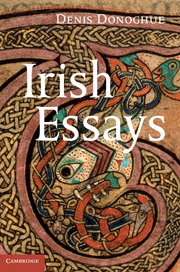8 - A plain approach to Ulysses
Published online by Cambridge University Press: 05 June 2012
Summary
Sometime in 1904 James Joyce, much given to drink and dissipation but not to violence, stumbled into a fracas in Dublin. Providentially he was rescued by a man named Alfred H. Hunter. Sobered up, Joyce conceived the notion of turning the episode into a short story and calling it “Ulysses.” It is not clear how the title would have suited the story or how the story might have been developed to answer the title. Homer's Odysseus was commonly thought of as a man of the world, a voyager, “the interminable adventurer,” as Wallace Stevens calls him in “The World as Meditation.” He was also admired as a man of parts, endlessly resourceful. But he was rarely identified with the Good Samaritan. Joyce intended to include the story in a book called Dubliners. He knew little about Hunter, except that he was reputed to be a Jew and to have an unfaithful wife. In the event, Joyce didn't write the story. On February 6, 1907 he told his brother Stanislaus that it “never got any forrader than the title.” But the matter didn't end there. Several years later and long after the publication of Dubliners, the unwritten story became chapter 16 (“Eumaeus”) of a long novel, Ulysses. In that chapter Leopold Bloom rescues Stephen Dedalus “in orthodox Samaritan fashion” from a bad night on the town and brings him to the cabman's shelter under the Loop Line Bridge, near Butt Bridge and the Custom House.
- Type
- Chapter
- Information
- Irish Essays , pp. 157 - 169Publisher: Cambridge University PressPrint publication year: 2011



